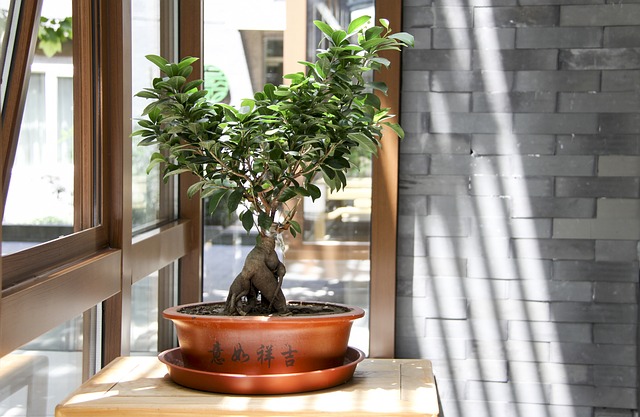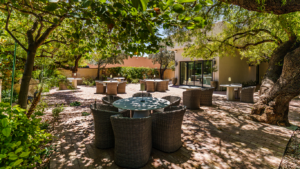Most of the Bonsai tree species are meant to live in an outdoor environment, as they need direct sunlight and watering to grow to their best potential. To place the Bonsai species in an indoor environment, one needs to be very specific about their placement.
While placing a Bonsai tree indoors, one must keep in mind that they are kept at a place that has direct access to sunlight, as they are intolerant of the interior lights. The artificial lights are not sufficient enough for these mini trees to help them photosynthesize. Some species are tolerant of indoor conditions, but they require the same amount of care that outdoor Bonsai trees need.
Below is a list of the Bonsai Trees that you can grow as indoor plants.
Ficus Bonsai
Ficus is among the most popular species of bonsai trees. With a massive variety of more than 800 species of Ficus, they add on a beautiful charm to any kind of indoor surroundings.
Ficus Benjamina is also popularly known as Weeping Fig. This Bonsai species has a fast-growing lush green foliage that loses their pointed leaves seasonally. Some Ficus Bonsai species are known for their milky sap, whereas some are even capable of producing small flowers.
Dwarf Umbrella Bonsai
Dwarf Umbrella tree also is popularly known as Schefflera Arboricola or Octopus tree. The name has been derived from its canopy-like foliage growth. It is a prevalent Bonsai species that one can adapt in a variety of styles like exposed roots over rocks, weeping banyan style.
This species has a strong foliage growth and produces leaves in a set of 8-10. However, they usually have weaker roots. Umbrella Bonsai trees can cause skin irritation in some people.
Chinese Elm Bonsai
Chinese Elm is one of the most popular among all the Bonsai Tree species. They not only make great indoor dwarf trees but also are the easiest to maintain. They have fast growth and are tolerant of overwatering, which most species are not.
Chinese Elms produce small leaves in a pair of 5-8 leaves. When it comes to learning how to care for a bonsai tree, repotting is a must-do thing. These Bonsai trees require repotting every two years in the early spring, and the most exciting thing about these trees is that they change their color with time.
Dwarf Pomegranate Bonsai
Dwarf Pomegranate Bonsai trees are scientifically known as Punica Granatum Nana and make exceptional indoor dwarf trees. The tree grows heartwarming bright-colored tiny flowers that can please the senses of anyone.
The Dwarf Pomegranate Bonsai trees have a thick trunk and sprout delightful pomegranate fruits, which are very tiny but are edible. These species require some maintenance. To thrive beautifully, they need a sufficient amount of sunlight and just the right amount of watering.
Snow Rose Bonsai
Snow Rose Bonsai trees, also called Serissa Japonica, are widely known to produce little, yet eye-pleasing plentiful flowers. These species can usually flower in every season, but their beauty is at peak during early spring to late autumn, where the flowers are flourishing white or a little pinkish.
The Snow Rose Bonsai species is known as “The tree of a thousand stars.” They make beautiful mini trees for indoor as well as outdoor surroundings.
Fukien Tea Bonsai
Fukien Tea Bonsai trees, also called Ehretia Microphylla or Carmona Retusa, are amongst the most popular mass-produced indoor species. These species produce small flowers and red fruits all year round. The mini trees have a thick trunk, which can become difficult to handle after a while.
The foliage is lush green and waxy. Fukien trees require 5-6 hours of sunlight daily to grow in their best forms, and they need only when the soil starts to dry out.




